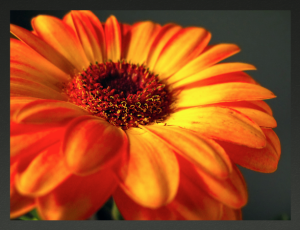Posted 1:24 p.m. Wednesday, March 12, 2014

Anatomy Memorial Ceremony to be held at 7 p.m. Tuesday, March 25, in Valhalla, Cartwright Center-Gunning Addition to thank families of body donors for their loved ones' donations.
 By UW-L student Breanna Levine
Most people do not become body donors, say Lecturer Kerrie Hoar and Associate Professor Tom Greiner, UW-L anatomy faculty. Only a special few that make this choice.
However, those who donate their bodies to science are really donating themselves to the education of the next generation of scientists, they say.
To extend their gratitude, students, faculty and staff in Health Professions, Biology and Exercise and Sports Science departments are hosting an Anatomy Memorial Ceremony at 7 p.m. Tuesday, March 25, in Valhalla, Cartwright Center-Gunning Addition. They want families of donors to see how much they value their loved ones' donations.
“We are recognizing these individuals for the enormously generous and valuable contribution they have made to our studies and research,” says biology student Representative Kali Kramolis. “The students and faculty who work with these individuals sometimes become emotionally attached, and the ceremony becomes very sentimental to us.”
The memorial will include guest speakers from the university, as well as performance pieces by faculty, staff and students. The event is open to all.
Furthering education using human cadavers at UW-L
UW-L has one of only a small number of undergraduate programs in the country that uses human cadavers to study anatomy. According to Greiner, who teaches graduate gross anatomy, this gives students an advantage.
“Students find that most bodies do not perfectly conform to the textbook description,” he says. “Sometimes muscles are missing. Sometimes nerves split apart or come together in unexpected patterns. These future clinicians need to realize that real bodies bear only a vague resemblance to their textbook presentations.”
Three UW-L departments host human cadavers. Students can use two cadavers in their studies in Mitchell Hall in the Exercise and Sports Science Department; students can use four cadavers in Cowley Hall in the Biology Department; and students in clinical graduate programs use 13 to 14 cadavers in the Health and Science Center.
Students in the anatomy graduate program have the added benefit of performing a dissection of the entire human body, notes Greiner. “Dissection becomes a process of discovery where the students have an opportunity to really appreciate where anatomical structures are and how they are situated relative to each other.”
This spring, three groups of students will present research projects at the Celebration of Student Research and Creativity about previously unknown or under-appreciated anatomical variations and the impact they can have on clinical practice. These projects, according to Greiner and Hoar, have the potential to improve health care treatment and diagnosis.
The people who donate themselves are making a contribution toward the improved health and well-being of everyone, they say.
Both Greiner and Hoar have the utmost respect for those who decide to donate their body to science, but Hoar has a personal connection. She has two relatives who donated their bodies for education.
“Every day in the lab, I encourage my students to take full advantage of the unique opportunity that our human cadavers offer,” Hoar says. “I hope to ingrain in our students a deep and lasting respect for those individuals who have given so generously of themselves.”
By UW-L student Breanna Levine
Most people do not become body donors, say Lecturer Kerrie Hoar and Associate Professor Tom Greiner, UW-L anatomy faculty. Only a special few that make this choice.
However, those who donate their bodies to science are really donating themselves to the education of the next generation of scientists, they say.
To extend their gratitude, students, faculty and staff in Health Professions, Biology and Exercise and Sports Science departments are hosting an Anatomy Memorial Ceremony at 7 p.m. Tuesday, March 25, in Valhalla, Cartwright Center-Gunning Addition. They want families of donors to see how much they value their loved ones' donations.
“We are recognizing these individuals for the enormously generous and valuable contribution they have made to our studies and research,” says biology student Representative Kali Kramolis. “The students and faculty who work with these individuals sometimes become emotionally attached, and the ceremony becomes very sentimental to us.”
The memorial will include guest speakers from the university, as well as performance pieces by faculty, staff and students. The event is open to all.
Furthering education using human cadavers at UW-L
UW-L has one of only a small number of undergraduate programs in the country that uses human cadavers to study anatomy. According to Greiner, who teaches graduate gross anatomy, this gives students an advantage.
“Students find that most bodies do not perfectly conform to the textbook description,” he says. “Sometimes muscles are missing. Sometimes nerves split apart or come together in unexpected patterns. These future clinicians need to realize that real bodies bear only a vague resemblance to their textbook presentations.”
Three UW-L departments host human cadavers. Students can use two cadavers in their studies in Mitchell Hall in the Exercise and Sports Science Department; students can use four cadavers in Cowley Hall in the Biology Department; and students in clinical graduate programs use 13 to 14 cadavers in the Health and Science Center.
Students in the anatomy graduate program have the added benefit of performing a dissection of the entire human body, notes Greiner. “Dissection becomes a process of discovery where the students have an opportunity to really appreciate where anatomical structures are and how they are situated relative to each other.”
This spring, three groups of students will present research projects at the Celebration of Student Research and Creativity about previously unknown or under-appreciated anatomical variations and the impact they can have on clinical practice. These projects, according to Greiner and Hoar, have the potential to improve health care treatment and diagnosis.
The people who donate themselves are making a contribution toward the improved health and well-being of everyone, they say.
Both Greiner and Hoar have the utmost respect for those who decide to donate their body to science, but Hoar has a personal connection. She has two relatives who donated their bodies for education.
“Every day in the lab, I encourage my students to take full advantage of the unique opportunity that our human cadavers offer,” Hoar says. “I hope to ingrain in our students a deep and lasting respect for those individuals who have given so generously of themselves.”
